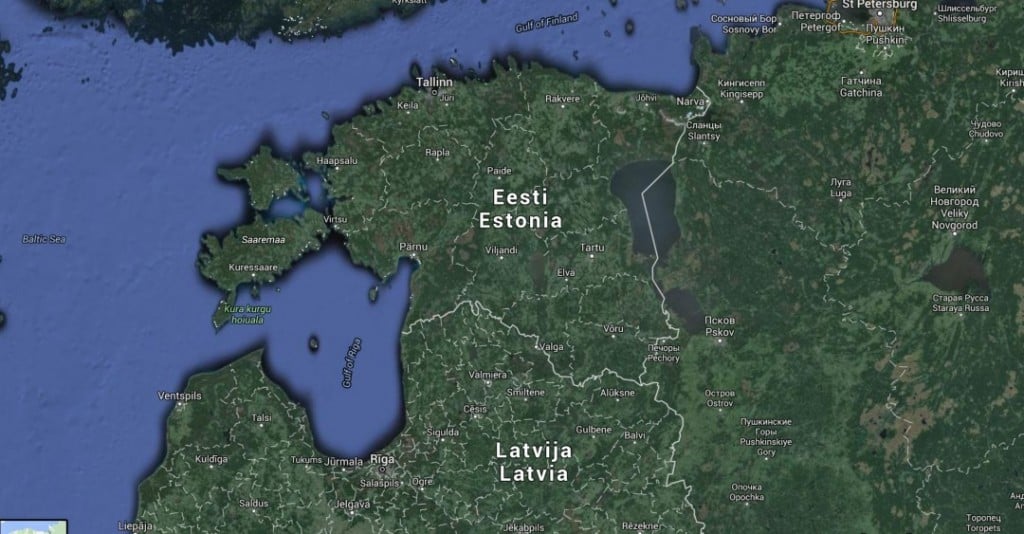
The survey of bridges was carried out on foot along the main road linking East and West in southern Estonia, according to a NATO counter intelligence report completed in the spring of 2015.
On foot
The NATO report, obtained by aldrimer.no, is based on information from Estonian counterintelligence, probably from the Estonian Internal Security Service Kaitsepolitseiamet (KaPo) or from a military counter intelligence unit within the Estonian defense forces.
Over «the last few months Russian diplomatic personnel have done systematic on foot analysis of the major bridges in the major East-West corridor in the south of Estonia,» the document says.
«The bridges are located along the major highway running from the Russian border to the Baltic Sea. Just east of the Russian border crossing point is a Russian airborne brigade and a Russian helicopter brigade meant to support the airborne brigade,» the NATO report says.
The main road starts at the Estonian-Russian border. Defence sources say this key road may have been surveyed to check whether bridge dimensions and tolerances would allow tanks and heavy weapons to cross.
First wave
There is also a strategically important railway line from the Estonian-Russian border in the south.
According to the NATO report, both the main road and railway are probable targets for Russia if it at some point decided to carry out a military invasion.
These could be «an objective for the Russian airborne and (special operations) SOF units in the event of a Russian invasion into Estonia.»
The airborne brigade and Russian special forces could be the first wave of any possible invasion, concludes NATO.
Psychological warfare
Aldrimer.no understands that Russian diplomats made no effort to hide their mapping efforts, suggesting that an invasion was probably not imminent and that the intent may have been much broader than just checking bridge structures.
«Being so open about their efforts means that we can’t rule out the that the main purpose may have been psychological warfare against NATO and the Estonian authorities,» said a NATO source.
NATO and the Estonian authorities both assume that diplomats who did the surveys in southern Estonia actually work for Russian intelligence.
Declined to comment
NATO spokesperson Rehanna Jones-Boutaleb declines to comment on the story.
«We never comment on alleged leaks of confidential information», Jones-Boutaleb informs aldrimer.no in an email.
Neither will the Ministry of Defence in Estonia. In a short email response, the Ministry states that it will not comment on the story, since it is under the responsibility of the Estonian internal security service Kaitsepolitseiamet (KAPO). However, also KAPO refuses to comment on any details pertaining to what the service has or has not reported to NATO and other international partners.
«KAPO`s international cooperation is a state secret and therefore I cannot comment on whether and what information we share or do not share with our international partners», press officer Harrys Puusepps informs aldrimer.no in an email.
«We are as open as possible in sharing our data, analysis and conclusions on security threats to Estonia with Estonian and international public», Puusepp says, adding that an alternative source of information is the annual reviews done by KAPO.

In a public statement during his weekly press conference at the government offices at Stenbock House in Tallinn on Thursday, the Estonian prime minister Taavi Rõivas attacked earlier reports by aldrimer.no on Russian intelligence gathering activities targeting the secret NATO special operations exercise Trident JAGUAR in Estonia in April last year. The articles have attracted widespread attention in Estonia. The prime minister claimed the reports were partly untrue. Rõivas said the information refers to exercise scenarios and not reality. The prime minister offered, however, no further details to back up his claims.
Russian ambassador
The Russian ambassador to Estonia rejects the new information about Russian diplomats cataloging bridges as incorrect.
«I would like to convince you, if you will, that the staff of Embassy didn’t catalogue nor took pictures of bridges of South and East Estonia», ambassador Alexandr Petrov said in en email statement.
«The goal of embassy is to build bridges to bilateral relations and to secure bridges between the nations of our countries. If you don’t believe me, listen the words of the prime minister Taavi Rõivas of Estonia, who just said that the rumours of Russian special forces operating in Estonia are simply not true.» Petrov added.
By Khetil Stormark and Laura Mallene, aldrimer.no
Footnote: This story has been developed as a part of a partnership and cooperation between aldrimer.no and the Estonian, national newspaper Eesti Päevaleht.





